We Raced on Maserati’s High-Tech 70-Foot Trimaran. Here’s What It Was Like.

- Oops!Something went wrong.Please try again later.
Standing on trampoline netting above the Maserati Multi70 trimaran’s windward hull, I watch as the boat glides over smaller waves without feeling so much as a hint of chop. It’s almost surreal flying this high, 10 or 15 feet above the water. Only when we cross the massive wake of an oil tanker, and our hulls react to the turbulence thrown up by the gargantuan vessel, do I feel a touch of vertigo.
We’re doing pre-race training offshore of San Pedro, Calif., for the 2,225-nautical mile Transpac race to Honolulu, Hawaii. It’s a calm day, with light winds at just 7 to 9 knots. The speed the boat is producing, 14 to 16 knots, feels counterintuitive given the actual wind speed. But the Maserati’s massive sails, lightweight carbon-fiber hull and hydrodynamics designed for ocean racing all deliver a strong speed—either with or into the wind.
More from Robb Report
David Beckham Just Designed Pair of Custom Maseratis, and They're Up for Grabs
David Beckham Shows Off the Gorgeous Baby Blue Interior of the New Maserati GranTurismo
Italian Captain Giovanni Soldini steers one of two tillers at the stern, always on the “uphill” side, as the boat heels over modestly. No wheel or even dual-wheel helm here. This is a full-on race boat with zero concessions to creature comfort, to the point where the carbon-fiber daggerboard under the central hull reverberates up through the cabin to the mast and over to the outrigger hulls. It first sounds like a whistle and then becomes a scream as our speed picks up.
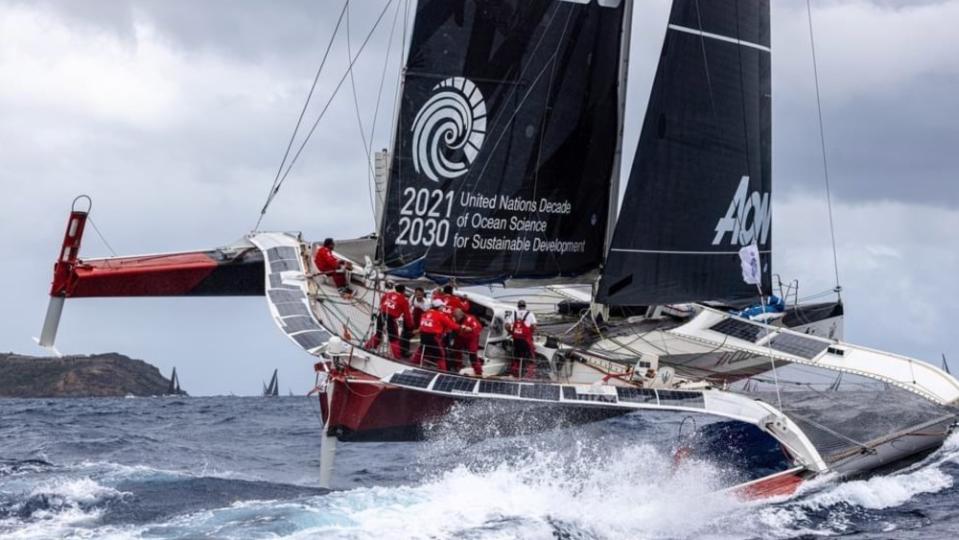
Soldini’s crew of six, now making their third trip around the globe, needs to adapt to that tune to be able to sleep in the two tiny bunks below deck.
This Multi70 often wins the races it enters, but this year’s Transpac has posed more than the typical challenge of man against the sea, thanks to customs agents in Mexico who confiscated a shipping container full of equipment, including the racing foils and sails. With no hope of liberating the container before the race started for the big trimarans on July 1, Soldini and his crew had to set sail with delivery equipment only.
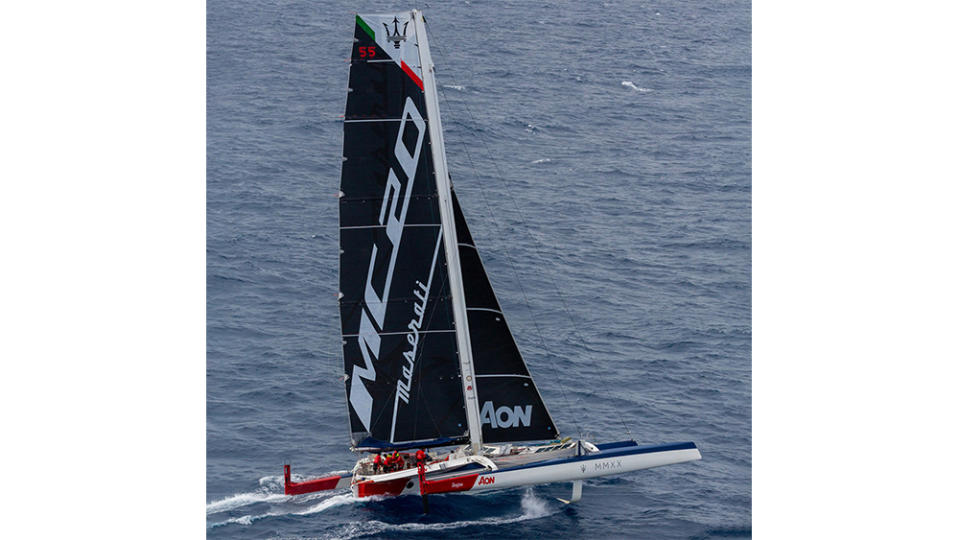
In ideal conditions, the Multi70 can “fly” at 46 knots above the water on its foils. Even so, earlier this year the team lost a 37-hour contest in the Caribbean by a margin of only 11 seconds—proof of how much marginal gains matter, even when the race extends to days or weeks.
That kind of performance presents specific challenges solved in partnership with Maserati, a team-up that began 10 years ago when the late Sergio Marchionne, the auto titan credited with the turnarounds of Fiat and Chrysler, noticed Soldini setting transoceanic records. Marchionne offered a collaboration that helped this racing yacht become one of the fastest in its class.
“Maserati’s input has always been important,” Soldini told Robb Report. “We worked with them to solve a whole range of challenges, perhaps the most important one was aerodynamics.” The engineers at Maserati Centro Stile improved the trim of the three rudders, synchronizing the rudders to reduce water resistance and enhance performance. The sensors Maserati developed to facilitate the gains is the same technology the carmaker uses to dial in automotive steering and alignment.
The Multi70 also only weighs about 15,500 pounds, mostly because every ounce counts on an offshore racing machine. That’s despite a conversion to electric power that employs dense 15 kWh batteries developed at Maserati’s innovation lab in Modena.
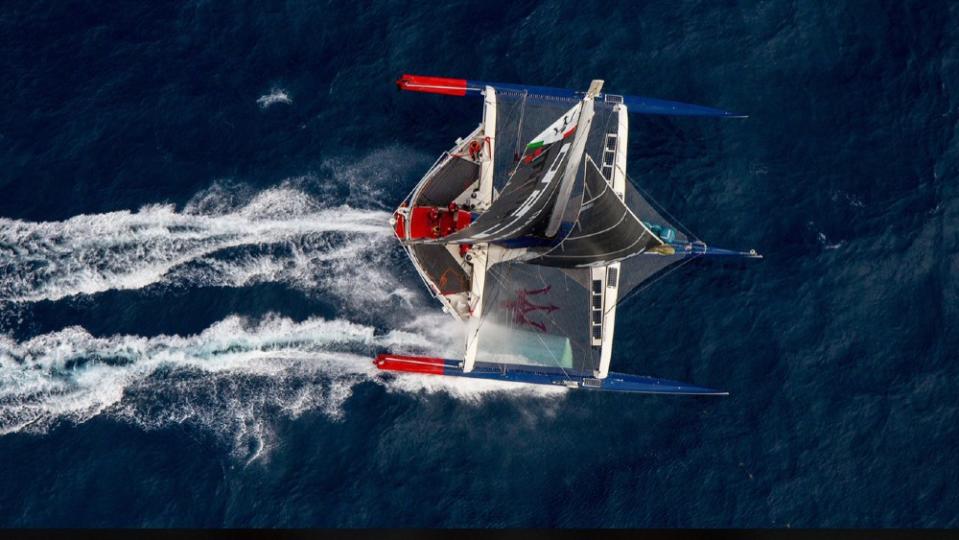
On our sail, Soldini uses the electric motor to pull into and out of San Pedro in near silence, noting that the electric system has been much more reliable than old-school diesel engines.
The yacht also has some other notable innovations. Three kilowatts of solar panels, built in Italy, double as grip tape on the Multi70’s slippery surfaces. They can replenish the 20 to 30 percent of charge that is used to pull out of a harbor in only two hours of sailing. A tiny wind turbine serves as a backup generator in case of darker days due to weather or low winter sun.
But the system is only based on 50-volt architecture—rather than the new Maserati GranTurismo’s 800-volt setup—because of the constant proximity to salt water. The batteries also help power the onboard desalination system for the crew’s drinking water, as well as a surface-water sampling device that constantly draws about 30 percent of total power. That device measures carbon-dioxide levels, salinity, and temperature for use by scientists back home.
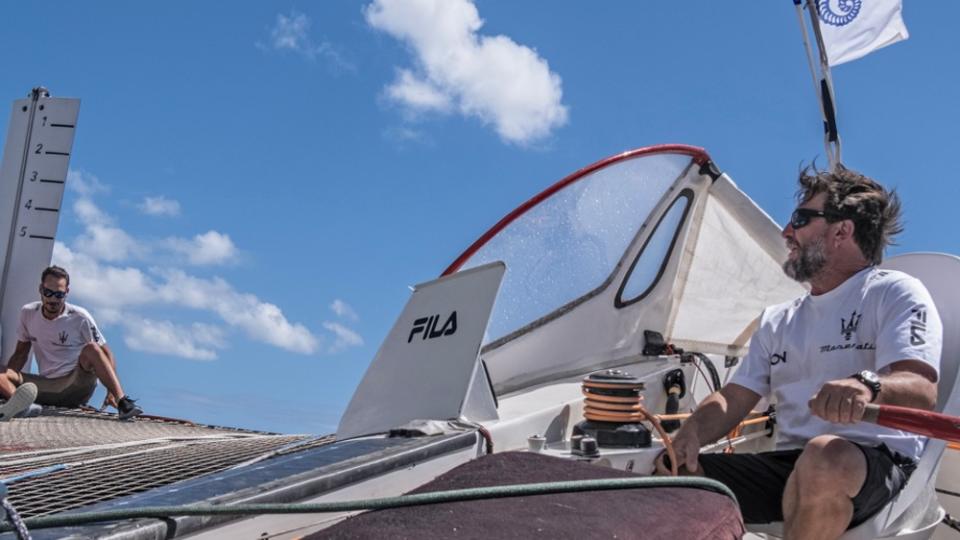
I am only there for the day, so experience just a small taste of what the race, a flat-out 24/7 experience, would be like for the team. Compared to the 42-foot Jeanneau and Hunter 410 monohulls I grew up sailing, the Multi70 builds up speed much more quickly. At the 16-knot speeds we’re experiencing, my childhood boats would be heeled to the extreme.
But this trimaran’s three adjustable hulls are rarely off level. That kind of impressive side-to-side stability then combines with a bow-to-stern length of 70 feet that lets the boat skate from crest to crest, over all but the deepest the troughs, keeping the sails perfectly positioned to maximize wind—even if the Los Angeles coastline’s idyllic conditions leave us wanting more speed.
With the crew working hard in preparation for the start of the Transpac, I help crank up the mainsail (and end up feeling it the next day). Despite the luxury connotations of the Maserati name, the cramped, spartan quarters mean everyone is always within earshot. Given the Maserati logos plastered everywhere, we joke about a lack of martinis or caviar.
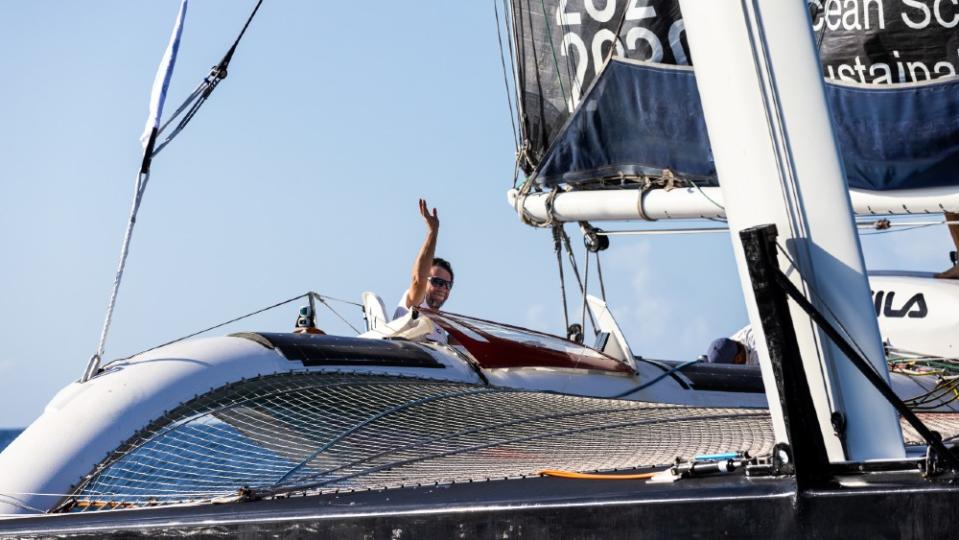
For Soldini, the Maserati Multi70 is more than just about racing. He calls it a “permanent laboratory” that will continue to improve with innovations launched by the carmaker.
The one takeaway I have from the afternoon’s sail is that, despite its futuristic design, the boat still has to contend with the unknowns of ocean racing. If something goes wrong, it could happen hundreds of miles from the nearest rescuer. In that sense, this shares the same thrills and pitfalls as old-time sailing, but at much faster speeds.
Offshore racing has always been, at best, an unpredictable adventure. Which is why sailors like Soldini and his crew love it, having sailed for tens of thousands of miles, often through dangerous conditions. “Sailing on this boat is always a pleasure,” he says, adding with some understatement, “I’m very fond of it.”
Update: The Maserati Multi70 finished second for an elapsed time of 4 days, 23 hours, 55 minutes. It’s the eighth fastest time in Transpac history.
Best of Robb Report
Sign up for Robb Report's Newsletter. For the latest news, follow us on Facebook, Twitter, and Instagram.

